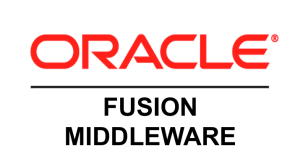Weblogic admin Tutorila
Weblogic admin Tutorila
Weblogic admin Tutorila
Weblogic admin Tutorila
Overview of WebLogic Server System Administration
- Introduction to System Administration
- WebLogic Server Domains
- System Administration Infrastructure
- The Administration Server and Managed Servers
- System Administration Tools
- Resources You Can Manage in a WebLogic Server Domain
- Starting the Administration Console
- Using WebLogic Server with Web Servers
- Monitoring
- Licenses
Introduction to System Administration
You manage a WebLogic Server installation by using any of several system administration tools provided with WebLogic Server. A WebLogic Server installation can consist of a single WebLogic Server instance or multiple instances, each hosted on one or more physical machines. The system administration tools include the Administration Console, command line utilities, and an API, with which you manage security, database connections, messaging, transaction processing, and the runtime configuration of your applications. The tools also allow you to monitor the health of the WebLogic Server environment to ensure maximum availability and performance for your applications.
WebLogic Server Domains
The basic administrative unit for a WebLogic Server installation is called a domain. A domain is a logically related group of WebLogic Server resources that you manage as a unit. A domain always includes only one instance of WebLogic Server called the Administration Server. The Administration Server serves as a central point of contact for server instances and system administration tools. A domain may also include additional WebLogic Server instances called Managed Servers.
You can configure some or all of these Managed Servers to be part of a WebLogic Server cluster. A cluster is a group of WebLogic Server instances that work together to provide scalability and high-availability for applications. A Managed Server in a cluster can act as a backup for services such as JMS and JTA that are hosted on another server instance in the cluster. Your applications are also deployed and managed as part of a domain.
- Logical divisions of applications. For example, a domain devoted to end-user functions such as shopping carts and another domain devoted to back-end accounting applications.
- Physical location. Domains for different locations or branches of your business.
- Size. Domains organized in small units that can be managed more efficiently, perhaps by different personnel.
Weblogic admin Tutorila
Weblogic admin Tutorila
Weblogic admin Tutorila
Weblogic admin Tutorila
Oracle Support

https://www.captonixsolutions.com/p/jobs.html
ReplyDeletehttps://vigneshcateringv.blogspot.com/
ReplyDeletehttps://venkatsvbbricks.blogspot.com/
ReplyDelete